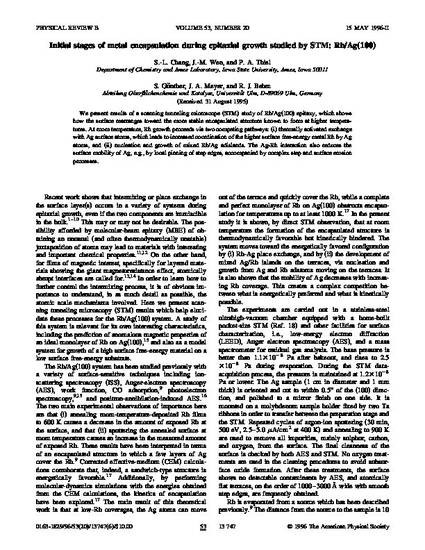
Article
Initial stages of metal encapsulation during epitaxial growth studied by STM: Rh/Ag(100)
Physical Review B
Document Type
Article
Disciplines
Publication Date
5-15-1996
DOI
10.1103/PhysRevB.53.13747
Abstract
We present results of a scanning tunneling microscope (STM) study of Rh/Ag(100) epitaxy, which shows how the surface rearranges toward the more stable encapsulated structure known to form at higher temperatures. At room temperature, Rh growth proceeds via two competing pathways: (i) thermally activated exchange with Ag surface atoms, which leads to increased coordination of the higher surface free-energy metal Rh by Ag atoms, and (ii) nucleation and growth of mixed Rh/Ag adislands. The Ag-Rh interaction also reduces the surface mobility of Ag, e.g., by local pinning of step edges, accompanied by complex step and surface erosion processes.
Copyright Owner
American Physical Society
Copyright Date
1996
Language
en
File Format
application/pdf
Citation Information
S.-L. Chang, J.-M. Wen, Patricia A. Thiel, S. Günther, et al.. "Initial stages of metal encapsulation during epitaxial growth studied by STM: Rh/Ag(100)" Physical Review B Vol. 53 Iss. 20 (1996) p. 13747 - 13752 Available at: http://works.bepress.com/patricia_thiel/80/

This article is from Physical Review B 53, no. 20 (1996): 13747–13752, doi:10.1103/PhysRevB.53.13747.